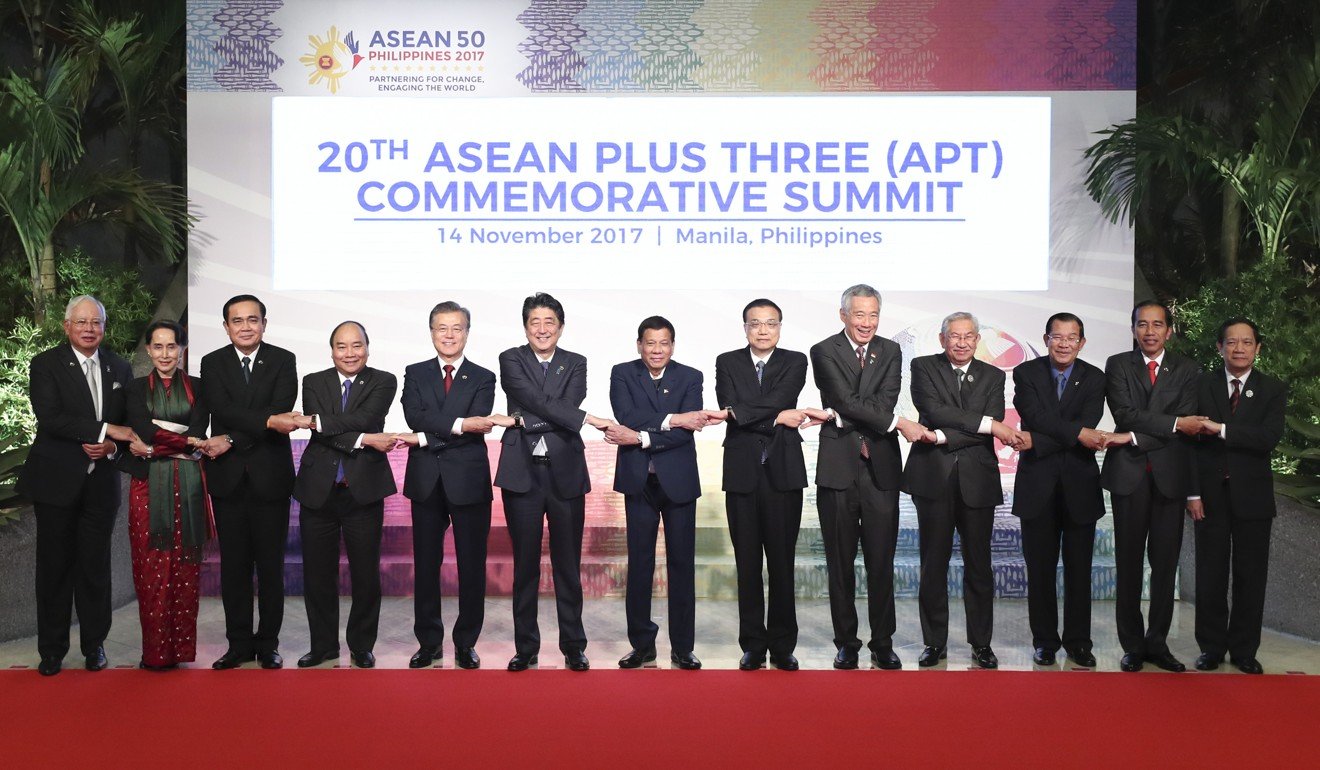
Asean’s ‘landmark’ South China Sea deal may not mean it will all be plain sailing in future
Both sides welcomed the new code of conduct agreed between the bloc and Beijing but doubts remain about how effective it will be
The Philippines has concluded its chairmanship of the Association of Southeast Asian Nations (Asean) with a series of landmark agreements.
Of crucial importance, however, was the finalisation of the framework of a much-ballyhooed Asean-China Code of Conduct (COC) in the South China Sea. Both sides hailed it as a crucial milestone towards ensuring rule of law in the troubled waters.
After years of non-stop tensions among claimant states, this is undoubtedly the right step in the right direction. The challenge, however, is to make sure that the final COC will be negotiated expediently and has a consequential impact on the management and resolution of the decades-long disputes.
In its joint statement, Asean hailed the “adoption of the framework of the Code of Conduct for the South China Sea” as a crucial prerequisite for the “conclusion of a substantive and effective” final document.
The final stage of negotiations officially kicked off during the 20th Asean-China Summit on November 13, when Chinese Premier Li Keqiang met his Southeast Asian counterparts and discussed ways to “maintain peace, stability, freedom of navigation in” the disputed waters and the skies over them.
COC negotiations have created positive momentum towards confidence-building measures such as the successful testing of the Hotline to Manage Maritime Emergencies in the South China Sea among relevant foreign ministries.
The two sides are also hammering out the operationalisation of the Joint Statement on the Observance of the Code for Unplanned Encounters at Sea to avoid unwanted clashes in increasingly militarised areas as well as the high seas.
At the moment, the priority is to freeze the cycle of escalation in the contested waters in hopes of achieving commonly accepted rules of the road before definitively resolving the disputes.
Early next year, a technical team, or the so-called Working Group Meeting on the Implementation of the DOC, will meet in Vietnam to iron out the minute aspects and central provisions of the final COC.
The Philippines, which just passed on its chairmanship to Singapore, will take over as the Asean-China country coordinator. Thus, Manila will continue to have significant influence on the trajectory of diplomatic negotiations between the two sides.
Under President Rodrigo Duterte, the Philippines has prioritised improving bilateral economic ties with China in exchange for taking a softer approach to territorial disputes in the area.

After his meeting on November 11 with President Xi Jinping on the sidelines of the Asia Pacific Economic Cooperation Summit, the Philippine leader maintained that the South China Sea issue was “better left untouched”.
For Duterte, it’s important that both sides focus on a diplomatic resolution of the disputes via mechanisms such as the proposed COC, whatever shape it may take.
Yet, the devil is ultimately in the details. Fifteen years after the signing of the Declaration on the Conduct of Parties (DOC) in the South China Sea, the two sides have just managed to finalise the framework of a COC.
In fact, the concept of a COC was proposed as early as 1996 during the 29th Asean Ministerial Meeting in Jakarta. Back then, regional states called for a legally binding COC in the South China Sea, which would “lay the foundation for long-term stability in the area and foster understanding among claimant countries”.
More than two decades thereafter, it isn’t even clear if the final agreement will be legally binding or, similar to the DOC, end up as a fundamentally normative document.
China has insisted on including there is “no major outside interference” in the situation and it is unclear whether Beijing is also demanding that Asean states stop any security cooperation with the US or Japan in the area.
The outline of the COC’s framework excludes the possibility that the final document could be used as “an instrument to settle territorial disputes or maritime delimitation issues.” Instead of binding laws, it proposes a “rules-based framework” anchored by “a set of norms”, which will govern the conduct of and cooperation among claimant states.
Thus, the question that arises is whether the COC will carry any added value, since the DOC already represents a clear set of norms governing the conduct of disputing parties.
Meanwhile, critics claim that China is using the COC negotiations as a diplomatic cover for its massive reclamation activities and militarisation of the disputes on the ground.
Moreover, critics claim, the COC could be used to effectively bury the Philippines’ landmark arbitration award against China by promoting an alternative set of rules and principles for addressing the disputes.
The reality, however, is that Asean claimant states have little choice but to place their faith in dialogue and negotiations.
After all, few have the willingness or capacity to confront Beijing, which has offered massive economic carrots to its southern neighbours. For a growing number of regional states, peace should be preserved at all costs, and the COC negotiations are one way of accomplishing that.
Richard Heydarian is a Manila-based academic and author of Rise of Duterte: A Populist Revolt against Elite Democracy

